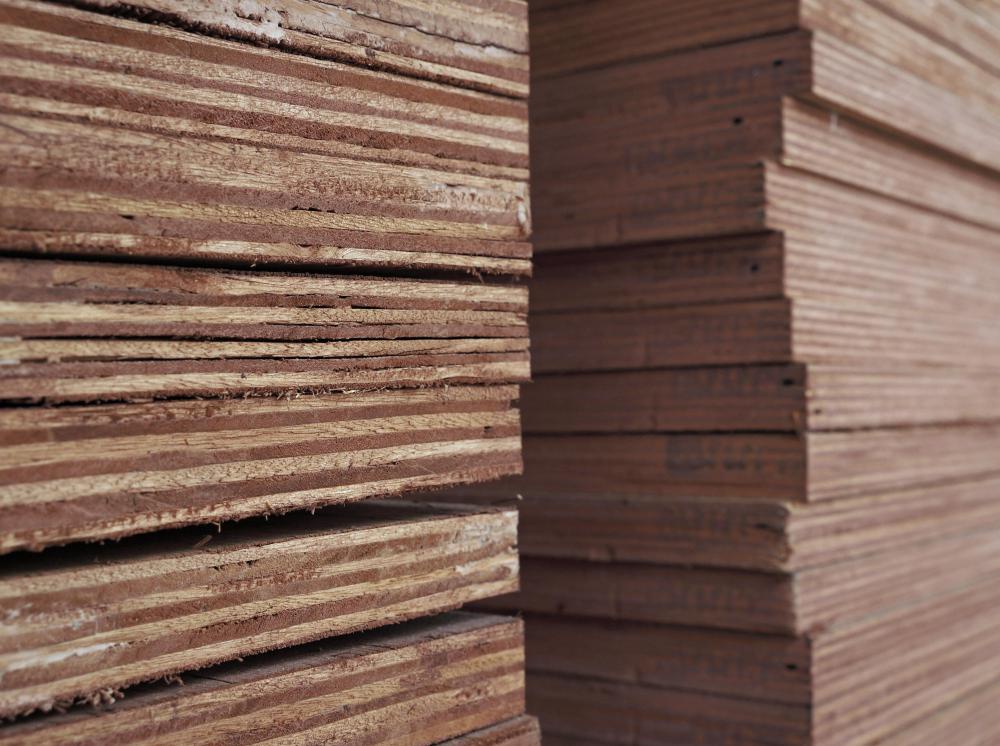At WiseGEEK, we're committed to delivering accurate, trustworthy information. Our expert-authored content is rigorously fact-checked and sourced from credible authorities. Discover how we uphold the highest standards in providing you with reliable knowledge.
What Are the Best Tips for Making a DIY Flat Roof?
A poorly constructed flat roof is riddled with problems. Unlike slanted roofs that shed water and snow, a flat roof retains pools of moisture and weight of snow, sprouting roof leaks that can damage the interior of the building. To construct a DIY flat roof that endures through rough weather and blistering sun, professional roofers offer basic tips for the project. These tips include framing the roof so that it has a slight incline, covering the roof with plywood decking, taking advantage of new technology in roofing materials, securing the flashing well, and keeping the roof meticulously maintained.
The best DIY flat roof is, technically, not completely flat. All flat roofs have some incline. Small flat roofs may tilt to one side, while large roofs may slope toward the center of the roof — where water flows toward a large central drain. The most basic do-it-yourself design features an inclined flat roof, such as for a garage or a house addition. The slope of the roof should measure at least 0.125 inch (0.3 cm) to 0.25 inch (0.6 cm). To create the slope, the homeowner can cut small wedges of lumber to secure below the horizontal rafters, or cut and nail the rafters at the proper angle directly.

The best DIY flat roof decking material is 0.625-inch (1.6 cm) exterior-grade plywood. This plywood should be placed with a 0.125-inch (0.3 cm) expansion gap between boards and secured with deck screws. Although the gap may seem counterproductive to preventing leaks, the space allows for the natural expansion and contraction of wood, reducing the chances of bulging and cracking.

Professional roofers then install a rigid foam and fiberglass board product called iso board. This material cushions the area between the hard plywood and one of the best DIY flat roofing materials, Ethylene Propylene Diene Monomer (EPDM). It is sold in rolls and resembles the thick plastic sheeting for lining small ponds.
Before installing the EPDM sheets, the roof should be thoroughly swept or blown off with a leaf blower. This will remove stones, twigs and other debris that can puncture the EPDM sheeting. Once the roof is clean, the homeowner will need to pre-measure and cut the EPDM sheets to fit, providing a minimum 6-inch (15 cm) overlap for all seams. The material should be glued down according to manufacturer directions. Projections such as chimneys and skylights must be meticulously flashed to prevent leaky seams.
Constructing a DIY flat roof is a one of the most difficult do-it-yourself projects. The flat roof must be perfectly framed to direct water flow away from the center of the building and avoid destructive leaks. Seams must be sealed well, as all projections need careful sealing. With these tips and careful yearly maintenance, the DIY flat roof can endure for several years.
AS FEATURED ON:
AS FEATURED ON:












Discussion Comments
When I was a kid, my father got angry with the guy who was supposed to be rebuilding the roof on our back porch. Daddy thought the man was taking advantage of him and not doing the work the right way, so he fired him.
Daddy ended up building the roof, and he was really proud because it looked pretty good. The bad thing was that the roof leaked every time it rained, and the back porch, which was closed in was usually wet. The water actually puddled in some places on the roof and water would drip onto the porch floor below for days after a heavy rainfall.
Any project can be a do-it-yourself project, but you need to have some practical experience when you start putting up a roof of any kind. Even with all the experience I have in construction, there are some areas where I need help and advice when it comes to roofs.
Remember, if you don't get the roof right then you are compromising the entire building, and you are also endangering anyone who is going to be inside the building or near it period.
Living in an area where there is not a lot of snow and ice falling every year makes me feel comfortable taking on a do-it-yourself, flat-roof building project. However, I wouldn't want to try this if I had any concerns about winter weather and snow and ice building up on the roof.
Even when you build the flat roof with the slight tilt like mentioned in the article, I think it is going to hold more frozen precipitation than a sloped roof would hold. This means the roof is going to be exposed to more weight, and it will need to be sturdy. That's just something to think about.
Post your comments